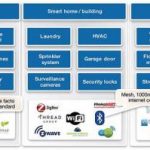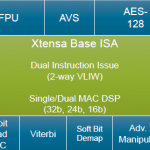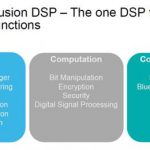You are currently viewing SemiWiki as a guest which gives you limited access to the site. To view blog comments and experience other SemiWiki features you must be a registered member. Registration is fast, simple, and absolutely free so please,
join our community today!
Dan is joined by Sam Presley, technical product manager at Nordic Semiconductor. With a background in electronics engineering, embedded firmware development and consumer products development, his current areas of expertise are hardware and software for IoT applications, with a special focus on enabling product manufacturers… Read More
How Ultra-wideband aligns with 5G’s premise
In part 3, we discussed the time-frequency duality or how time and bandwidth are interchangeable. If one wants to compress in time a wireless transmission, more frequency bandwidth is needed. This property can be used to increase the accuracy of ranging, as we saw in part 3. Another very… Read More
Bluetooth®, WiFi, LTE, and 5G technologies enable wireless connectivity for a range of applications. While each offer unique features and advantages, designers need now to decide which protocol to integrate in a single chip after having test the market by using wireless off-chip solutions. Bluetooth 5 builds upon the success… Read More
If we agree on the definition of IoT as a distributed set of services based on sensing, sharing and controlling through new nodes, we realize that these nodes are a big hardware opportunity. The chip makers and IP vendors have to create innovative SoC, delivering high performance at low cost and low energy. Moreover, the new systems… Read More
Bluetooth has been very successful for many years, but arguably trapped in a niche, at least for us consumers, as a short-range wireless alternative to a wire connection – to connect your phone to a car or speakers for example. (In fairness I should add that the 4.2 version has improved range and Bluetooth has already become quite … Read More
Security researchers recently created a proof-of-concept attack against Internet connected lightbulbs, causing breached devices to reach out and infect their neighbors. Propagation continues and spreads itself across the community. This hack highlights the insecurity in one of many IoT network protocols.
Researchers… Read More
There’s been quite a bit of debate about what is the “best” wireless option for the IoT, coming down usually in favor of there being no single best option. Applications are so widely varied that different solutions are needed to ideally fit different requirements. However, IoT economics require we settle on a limited set of options,… Read More
Talking about “connected devices”, we specify any system from high-end smartphones to the simplest low-cost tag, as far as this system will be wirelessly connected. IoT are by definition connected systems, and represent a significant portion of connected devices. By 2020, ABI Research predicts that there will be more than 45… Read More
Let me precise that by “IoT” I think about the IoT devices market, made of hundreds of application, wearable gadget to medical, home automation, and so on. One direct consequence of IoT (device) market explosion will be the strong growth of the server market (cloud), to transfer, compute and store information generated by the billions… Read More
Internet of Things (IoT) can be seen as a fashionable buzzword covering so many distinct applications that IoT is sometimes nick-named “Internet of Everything”, or it can be perceived as the next revolution in electronic systems generating more revenues than the smartphone and computer market together in 2020. But the industry… Read More






